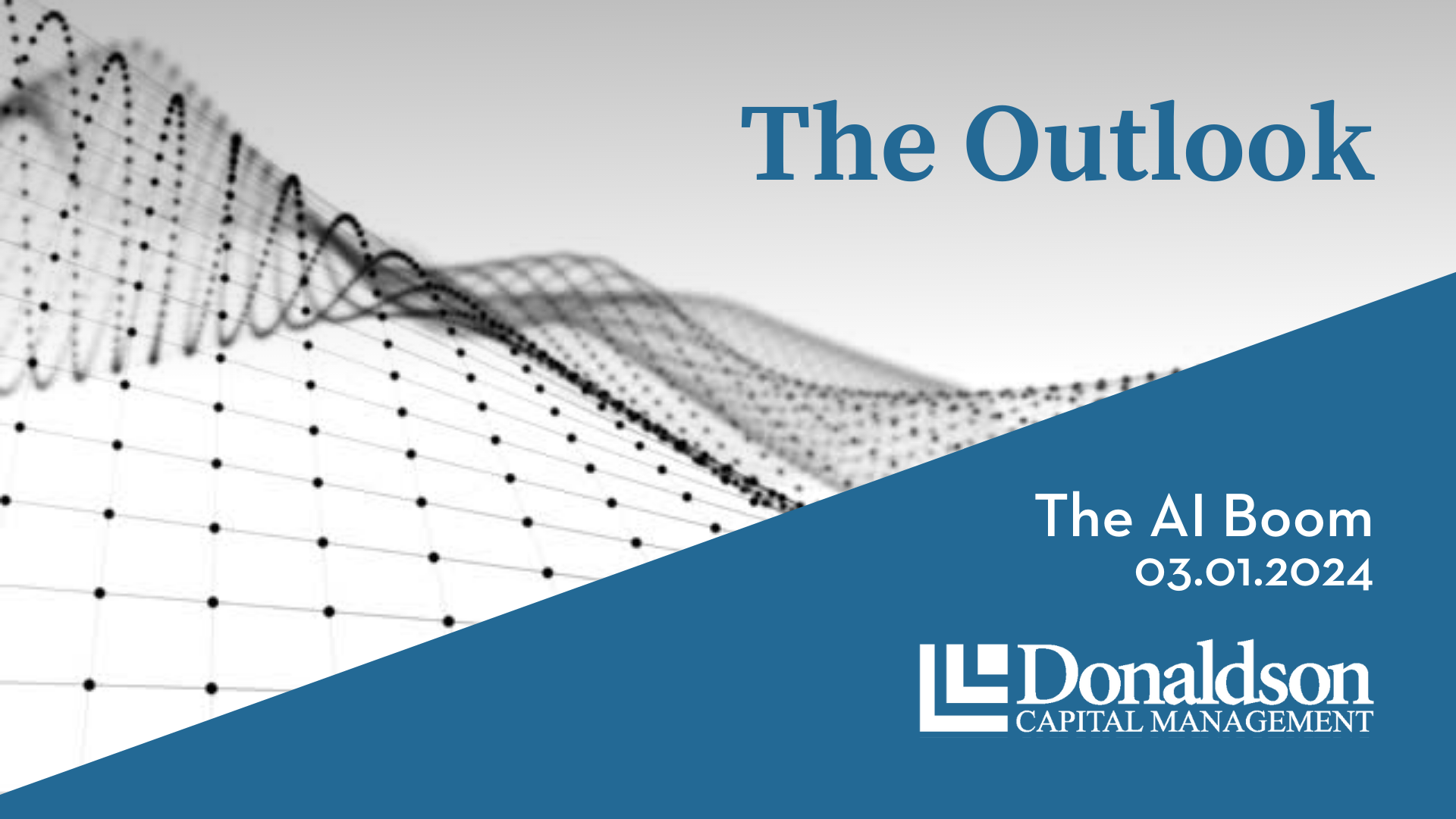The AI Boom
03.01.2024

Stock markets continue to ride the wave of optimism powered by artificial intelligence (AI), with the S&P 500 up 8.2% on the year, a new all-time high. Investors are buzzing over a handful of technology companies that have reported impressive chips, hardware, and services sales. For these companies, artificial intelligence rapidly moved from a theoretical concept to a highly profitable endeavor. However, the end users of these products and services are also getting a bump. Productivity gains driven by AI has the potential unleash earnings growth for a wide range of companies. Coupled with the enduring strength of consumers, this technological advancement holds limitless promise for the economy and, by extension, markets.
There is growing evidence that the AI boom is for real. In the last month, we have seen significant sales growth from companies like Nvidia, Broadcom, Microsoft, IBM, and Dell. While not an exhaustive list, these companies represent a broad spectrum of AI offerings. Nvidia and Broadcom are manufacturing the powerful chips needed to run AI applications. Microsoft is implementing AI into its suite of office products. IBM’s consultants are walking alongside companies as they build out their AI capabilities. More Dell servers are being ordered to manage the increased workload. These are a few examples, but they represent the changes taking place across the technology landscape.
Though inflation remains a concern, a viable solution is on the table. The Federal Reserve has done most of the heavy lifting with their rate hikes, but AI can help finish the job. An AI-driven productivity boom could enable simultaneous growth in wages and profits without the need for further price increases, paving the way for a strong economy. Sales of AI products and services have already materialized, and now markets are searching for evidence of improved efficiency among the buyers. Such a development could be a catalyst for further expansion of market performance.
So far, the technology companies remain the leaders in the market. However, we have begun to see greater activity in other market sectors. Industrials and Financials have gathered momentum over the first two months of the year. Some Health Care and Discretionary companies have also been catching a bid. On the other end of the spectrum, Utilities and Staples continue to lag behind. Economic strength is evident in the sector positioning. Going forward, we think it will be important to understand which companies are fully embracing and utilizing the AI powers at their disposal. There is plenty of room for growth.
Thanks,
Preston May, CBE®
Research Analyst
This report was prepared by Donaldson Capital Management, LLC, a federally registered investment adviser under the Investment Advisers Act of 1940. Registration as an investment adviser does not imply a certain level of skill or training. The oral and written communications of an adviser provide you with information about which you determine to hire or retain an adviser. Information in these materials are from sources Donaldson Capital Management, LLC deems reliable, however we do not attest to their accuracy.
An index is a portfolio of specific securities, the performance of which is often used as a benchmark in judging the relative performance to certain asset classes. Indexes are unmanaged portfolios and investors cannot invest directly in an index. An index does not charge management fees or brokerage expenses, and no such fees or expenses were deducted from the performance shown. Past performance is not a guarantee of future results. The mention of specific securities and sectors illustrates the application of our investment approach only and is not to be considered a recommendation by Donaldson Capital Management, LLC.
S&P 500: Standard & Poor’s (S&P) 500 Index. The S&P 500 Index is an unmanaged, capitalization-weighted index designed to measure the performance of the broad U.S. economy through changes in the aggregate market value of 500 stocks representing all major industries.